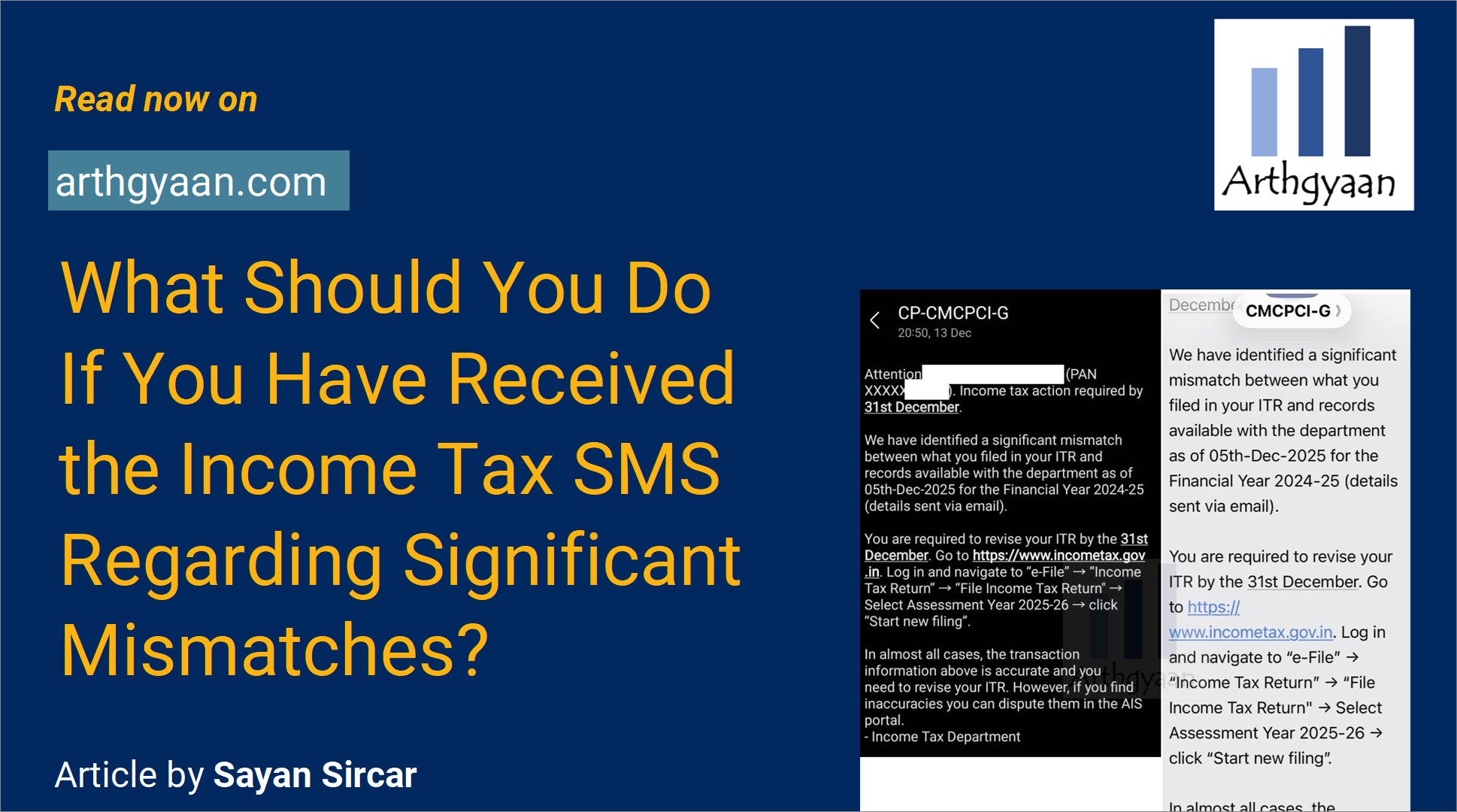FIRE Calculator
12 Cr
30 Lakh
Success (%):
Output:Additional parameters:
If you found this useful, check out the Arthgyaan step-up SIP calculator.
If you are looking to understand how to best manage your mutual fund portfolio, you can get a free Mutual fund portfolio review.
Key Input Parameters:
- FIRE Corpus: The total amount of money you have saved for retirement.
- Annual Expenses: Your estimated annual living expenses in retirement.
- FIRE Number: A multiple of your annual expenses, often used as a target corpus.
- SWR (Safe Withdrawal Rate): The percentage of your corpus you plan to withdraw annually.
- Time Period (Years): The duration of your retirement.
- Equity Allocation (%): The percentage of your portfolio invested in equities.
- Debt Allocation (%): The percentage of your portfolio invested in debt.
- Simulations to run: The number of Monte Carlo simulations to perform.
Additional Parameters:
- Method for generating returns: Random numbers using a normal distribution or the Block-bootstrap method.
- Inflation Mean & Variation: Expected inflation rate and its volatility.
- Equity Market Return & Variation: The expected return from equity investments and how much that return might vary. This is relevant only if you choose the Random numbers method
- Debt Market Return & Variation: The expected return from debt investments and how much that return might vary. This is relevant only if you choose the Random numbers method.
- Equity Long Term Tax (%): The tax rate on long-term capital gains from equity investments.
- Debt Long Term Tax (%): The tax rate on long-term capital gains from debt investments.
- Short-term cash holding period (Years): The number of years of expenses held in a low-risk, short-term account (the 'debt bucket').
- Equity Floor (%): The minimum equity allocation allowed during the simulation.
- Equity Allocation Change (%): The percentage by which equity allocation reduces every year
How it Works:
- Monte Carlo Simulation: The core of the calculator is a Monte Carlo simulation. This is a method that uses random sampling to determine the probability of different outcomes. In this case, it runs the retirement scenario many times (defined by "Simulations to run"). Each simulation uses slightly different, random/block-bootstrap generated investment returns (for both equity and debt) and inflation rates, based on the means and standard deviations. This helps to model the uncertainty of the real world.
- Asset Allocation and Rebalancing: You specify how your investments are divided between equity and debt. The simulation tracks how these investments grow (or shrink) each year, based on the random returns generated.
- Withdrawals: The calculator deducts your annual expenses from your portfolio each year. Importantly, the annual withdrawal amount is adjusted for inflation in each simulation, reflecting the increasing cost of living.
- Taxes: The calculator accounts for taxes on long-term capital gains from both equity and debt investments, making the simulation more realistic.
- Debt Bucket: A portion of your initial corpus is considered a "debt bucket". This represents money held in safer (vs. equity), liquid investments to cover short-term expenses. The simulation first withdraws from this bucket before touching the main corpus.
- Equity Glide Path: The calculator allows for a decreasing equity allocation over time, simulating a common strategy to reduce risk as you age.
- Success Rate: The calculator counts how many of the simulations result in your portfolio lasting the entire duration of your retirement (as specified in "Time Period (Years)"). The "Success (%)" is the percentage of simulations where you didn't run out of money.
Key Features and Considerations:
- Monte Carlo Advantage: Unlike simple fixed-rate calculators, this one acknowledges market volatility, giving you a more robust estimate.
- Customization: You can tailor many parameters to match your specific situation and investment strategy.
- Inflation and Returns: The calculator explicitly models inflation and the random nature of investment returns.
- Tax Impact: It includes the effect of taxes, which can significantly impact long-term returns.
- Debt Bucket: The inclusion of a debt bucket models a conservative approach to managing near-term expenses.
- Equity Glide Path: The decreasing equity allocation accounts for the reduced risk appetite as one ages.
- Success Rate Interpretation: A higher success rate indicates a more robust FIRE plan. However, there's no single "safe" number, and you should consider your own risk tolerance.
- Block-bootstrap returns: For the block-bootstrap method, we have used monthly Large Cap Equity and Gilt returns since Feb 2013 for Direct Mutual Funds by default. You can choose other categories as well using the drop-downs.
- Not Investment Advice: This calculator is for educational purposes only and should not be considered financial advice. Consult with a qualified advisor before making any investment decisions.
If you are planning your FIRE journey, then Arthgyaan packages can help you create and manage your FIRE portfolio effortlessly. Choose the year closest to your desired FIRE year to get started:
What's next? You can join the Arthgyaan WhatsApp community
You can stay updated on our latest content and learn about our webinars. Our community is fully private so that no one, other than the admin, can see your name or number. Also, we will not spam you.For resident Indians 🇮🇳:
For NRIs 🇺🇸🇬🇧🇪🇺🇦🇺🇦🇪🇸🇬: To understand how this article can help you:
If you have a comment or question about this article
The following button will open a form with the link of this page populated for context:If you liked this article, please leave us a rating
The following button will take you to Trustpilot:Check out our two calculators: Arthgyaan step-up SIP calculator
Arthgyaan step-up SWP calculator
Latest articles:

Published: 18 December 2025
13 MIN READ
Topics you will like:
Asset Allocation (19) Basics (8) Behaviour (20) Budget (24) Budgeting (12) Calculator (36) Case Study (7) Children (22) Choosing Investments (40) FAQ (20) FIRE (19) Fixed Deposit (10) Free Planning Tool (16) Gold (29) Health Insurance (8) House Purchase (43) Index Funds (6) Insurance (20) International Investing (16) Life Stages (2) Loans (27) Market Data (10) Market Movements (28) Mutual Funds (89) NPS (17) NRI (44) News (38) Pension (11) Portfolio Construction (61) Portfolio Review (32) Reader Questions (9) Real Estate (16) Research (6) Retirement (45) Return to India (8) Review (27) Risk (8) Safe Withdrawal Rate (6) Screener (8) Senior Citizens (6) Set Goals (29) Step by step (15) Stock Investing (5) Tax (109)Next steps:
1. Email me with any questions.
2. Use our goal-based investing template to prepare a financial plan for yourself.Don't forget to share this article on WhatsApp or Twitter or post this to Facebook.
Discuss this post with us via Facebook or get regular bite-sized updates on Twitter.
More posts...Disclaimer: Content on this site is for educational purpose only and is not financial advice. Nothing on this site should be construed as an offer or recommendation to buy/sell any financial product or service. Please consult a registered investment advisor before making any investments.
This post titled FIRE Calculator first appeared on 18 Dec 2025 at https://arthgyaan.com
We are currently at 567 posts and growing fast. Search this site: Copyright © 2021-2025 Arthgyaan.com. All rights reserved.

